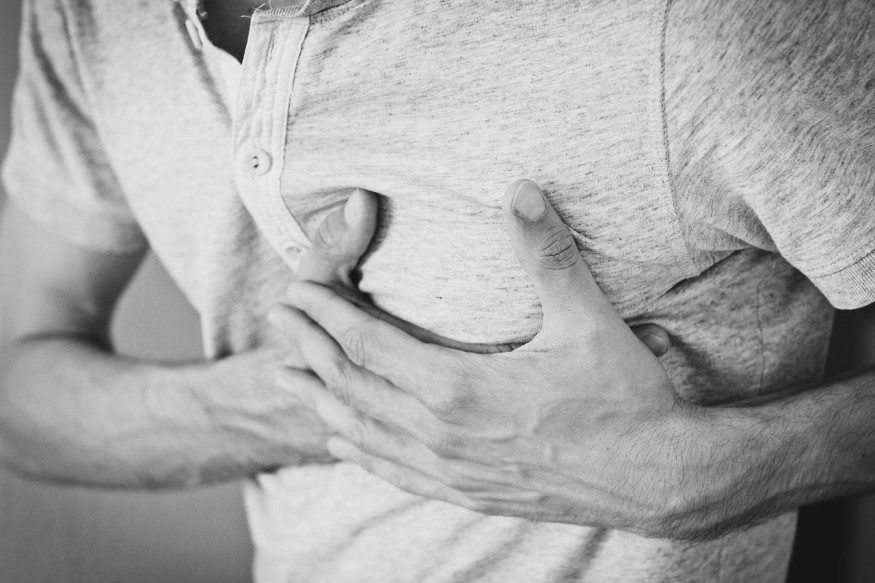New research directed by the Cleveland Clinic shows the effect of diets that are known to be high in choline. High levels of choline are frequent in egg yolks and red meat. The nutrient is also present in trimethylamine, which usually triggers severe stroke in a murine model.
Cardiovascular Disease Including Stroke Linked with TMAO Levels

Foods like red meat and egg yolks are rich in compounds including choline, L-carnitine, and betaine. The consumption of these foods pushes the gut bacteria to metabolize choline, L-carnitine, and betaine to trimethylamine or TMA.
After this process, TMA is quickly absorbed into the bloodstream, oxidized by flavin-containing monooxygenase-3 and converting it to trimethylamine-N-oxide or TMAO. After the complex process, the TMAO will then be secreted when urinating.
Many studies in the past have already identified the connection between heart disease and various levels of TMAO. One study supports the link between cardiovascular issues and TMAO. Researchers found that high rates of TMAO plasma related to platelet hyper-reactivity will result in a higher risk of developing atherosclerotic plaques in animals.
Some of the previous clinical studies also show that individuals with chronic renal failure, diabetes, or major cardiovascular diseases with acute coronary syndrome result in an increased TMAO plasma rate, reports News-Medical.
The number of people who are diagnosed with cerebral vascular diseases like stroke is still spiking around the globe, even if there are many new technologies to support treatments and diagnosis of the affected patients. Initial clinical studies have exhibited that microbial transplantation from a giver with a high potential to create TMA to a credulous host expanded atherosclerosis and apoplexy in mice. Experts from the Cleveland Clinic have recently transplanted different microbial networks into numerous murine stroke models to investigate the causal part of gut microorganisms in stroke.
ALSO READ : New Technique in Brain Scanning Solution to Diagnose Early Stages and Treatments of Neurological Disorders
Severity of Stroke Compared between Choline vs. TMAO Diet
In their investigation published in the journal Cell Host and Microbe entitled "Gut microbes impact stroke severity via the trimethylamine N-oxide pathway," two subjects provided human fecal material for the analysts. Though one contributor showed relentlessly high TMAO levels between the scope of 34.2 to 44.3 micromolar (µM), the other displayed extremely low TMAO levels inside the scope of 2.1 to 3.5 µM.
Stroke injury was incited utilizing a murine thrombotic ischemic stroke model five days after the germ-free mice were colonized with oral gavage. All mice were given a choline supplemental eating routine.
A huge positive connection emerged between the mice, with a bigger infarct volume saw in the high TMAO beneficiaries when contrasted with the low TMAO beneficiaries. The mice that got the high TMAO fecal transfer showed a 15 times more significant increase in circulating plasma TMAO levels than the mice that got the low TMAO benefactor microbial transfer.
The analysis examined the uniqueness of stroke severity in the subjects that received dietary choline supplementation in contrast with the subjects that had TMAO. Mice were kept up on these particular eating regimens for 3 weeks before cerebral injury. 24 hours after the stroke injury, plasma TMAO levels and the infarct volume of the mice were evaluated. Both TMAO and choline diets were found to fundamentally heightens plasma TMAO rates and cerebral infarct volume.
According to a separate study published in the European Journal of Neurology entitled "Trimethylamine-N-oxide is elevated in the acute phase after ischaemic stroke and decreases within the first days," In a span of three weeks, similar TMAO and choline diets were given to the mice followed by the incited stroke injury.
RELATED ARTICLE : Alpha Males in the Animal Kingdom and Why It Shouldn't Exist in Humans
Check out more news and information on Neurology in Science Times.
© 2025 ScienceTimes.com All rights reserved. Do not reproduce without permission. The window to the world of Science Times.









